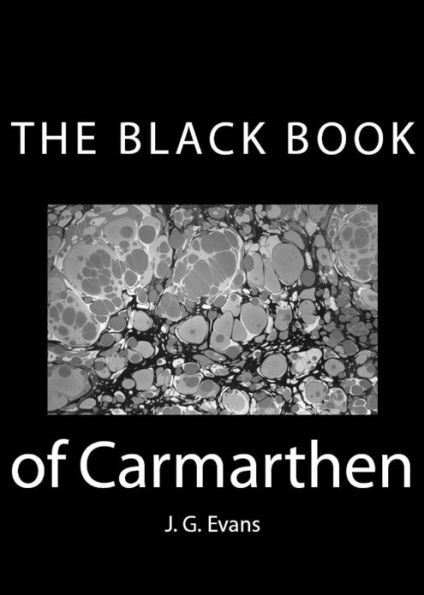The Black Book of Carmarthen
The Black Book of Carmarthen (Welsh: Llyfr Du Caerfyrddin) is thought to be the earliest surviving manuscript written entirely or substantially in Welsh. Written in around 1250, the book's name comes from its association with the Priory of St. John the Evangelist and Teulyddog at Carmarthen, and is referred to as black due to the colour of its binding. It is currently part of the collection of the National Library of Wales.
The book contains a collection of poetry falling into various categories. There are poems with religious subjects and odes of praise and mourning. Of greater interest to scholars are the poems which draw on traditions relating to the Welsh heroes associated with the Hen Ogledd, and especially those connected with the legend of Arthur and Myrddin, also known as Merlin. One of the poems, The Elegy of Gereint son of Erbin, refers to the Battle of Llongborth, the location of which can no longer be pinpointed, and mentions Arthur's involvement in the battle.
There has been a recent call from the editor of the Carmarthen Journal newspaper to house the Black Book in its native Carmarthen, so that it might be seen by locals and tourists coming into the town.
1110007062
The book contains a collection of poetry falling into various categories. There are poems with religious subjects and odes of praise and mourning. Of greater interest to scholars are the poems which draw on traditions relating to the Welsh heroes associated with the Hen Ogledd, and especially those connected with the legend of Arthur and Myrddin, also known as Merlin. One of the poems, The Elegy of Gereint son of Erbin, refers to the Battle of Llongborth, the location of which can no longer be pinpointed, and mentions Arthur's involvement in the battle.
There has been a recent call from the editor of the Carmarthen Journal newspaper to house the Black Book in its native Carmarthen, so that it might be seen by locals and tourists coming into the town.
The Black Book of Carmarthen
The Black Book of Carmarthen (Welsh: Llyfr Du Caerfyrddin) is thought to be the earliest surviving manuscript written entirely or substantially in Welsh. Written in around 1250, the book's name comes from its association with the Priory of St. John the Evangelist and Teulyddog at Carmarthen, and is referred to as black due to the colour of its binding. It is currently part of the collection of the National Library of Wales.
The book contains a collection of poetry falling into various categories. There are poems with religious subjects and odes of praise and mourning. Of greater interest to scholars are the poems which draw on traditions relating to the Welsh heroes associated with the Hen Ogledd, and especially those connected with the legend of Arthur and Myrddin, also known as Merlin. One of the poems, The Elegy of Gereint son of Erbin, refers to the Battle of Llongborth, the location of which can no longer be pinpointed, and mentions Arthur's involvement in the battle.
There has been a recent call from the editor of the Carmarthen Journal newspaper to house the Black Book in its native Carmarthen, so that it might be seen by locals and tourists coming into the town.
The book contains a collection of poetry falling into various categories. There are poems with religious subjects and odes of praise and mourning. Of greater interest to scholars are the poems which draw on traditions relating to the Welsh heroes associated with the Hen Ogledd, and especially those connected with the legend of Arthur and Myrddin, also known as Merlin. One of the poems, The Elegy of Gereint son of Erbin, refers to the Battle of Llongborth, the location of which can no longer be pinpointed, and mentions Arthur's involvement in the battle.
There has been a recent call from the editor of the Carmarthen Journal newspaper to house the Black Book in its native Carmarthen, so that it might be seen by locals and tourists coming into the town.
0.99
In Stock
5
1

The Black Book of Carmarthen
215
The Black Book of Carmarthen
215eBook
$0.99
Related collections and offers
0.99
In Stock

Product Details
| BN ID: | 2940015509816 |
|---|---|
| Publisher: | Balefire Publishing |
| Publication date: | 10/22/2012 |
| Sold by: | Barnes & Noble |
| Format: | eBook |
| Pages: | 215 |
| File size: | 6 MB |
From the B&N Reads Blog
